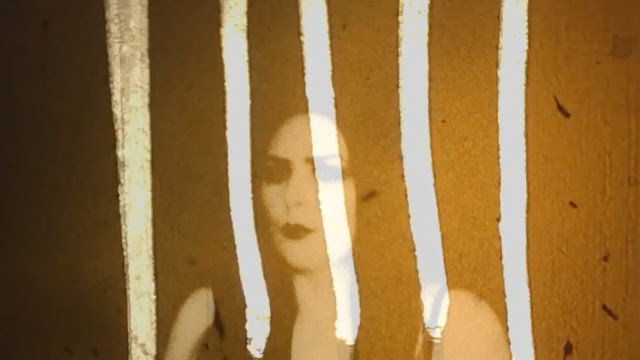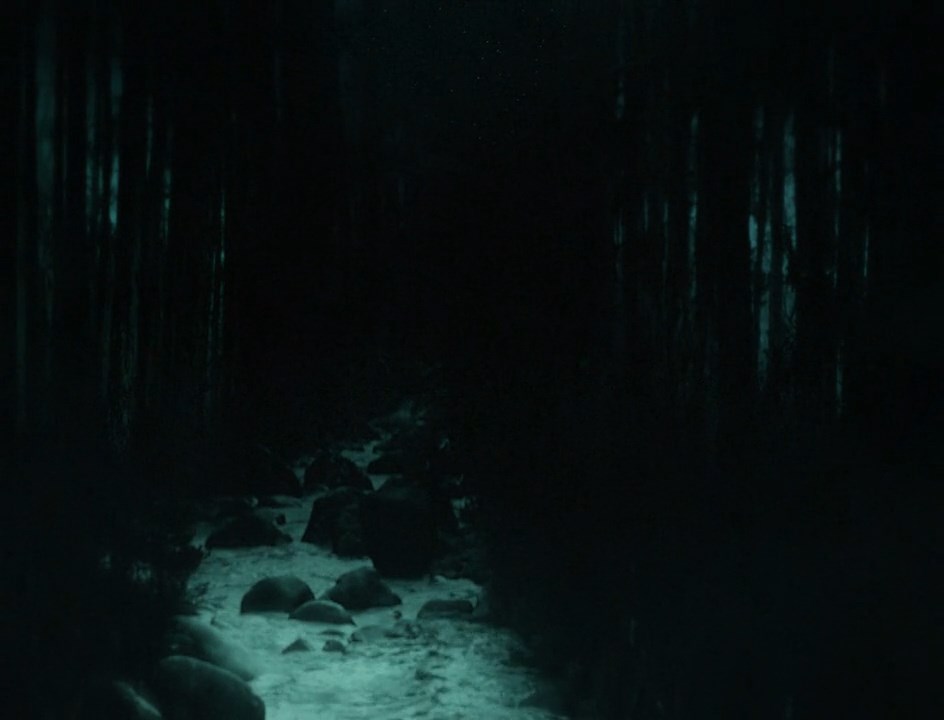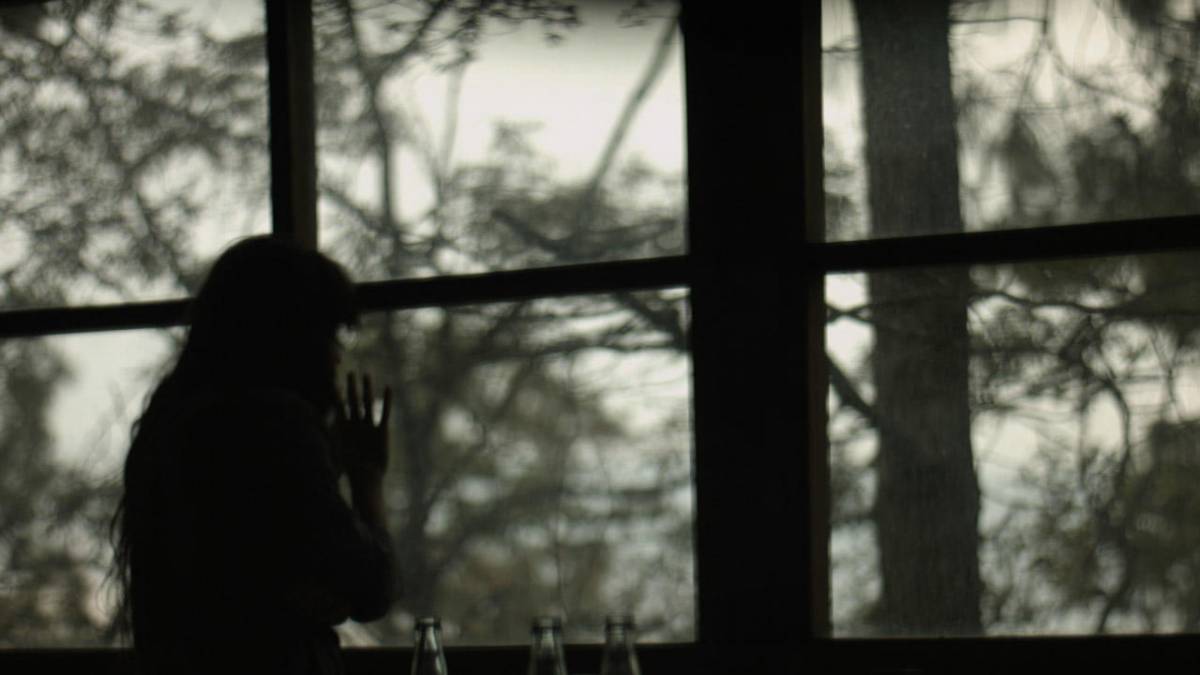Contemporary underground cinema is pretty much alive and kicking (some serious ass), thanks to its enthusiastic “children” who assure us, time and again, that it is possible to make a remarkable piece of art even without any budget or with extremely limited resources (you know, shoestrings and such). In many cases, the latter operates as a creativity booster and/or inspires the viewers to spring into action themselves – to grab whatever shooting device they have and just start filming.
The ten varied works discussed hereinafter are listed in alphabetical order and intended as a starting point for further exploration or, with respect to the subject, deeper digging that might lead you to real gems – not as shiny as your latest Hollywood flick, but imbued with passion and sincerity.
Anarchy in the UK: The New Underground Cinema (Jett Hollywood, 2016)
Fabrizio Federico’s most accomplished effort to date is directed by his late alter ego Jett Hollywood who was none other than Ziggy Stardust’s illegitimate son from Mars, according to the happy-go-lucky auteur’s official page. Chronicling the UK’s ‘Misrule Cinema Movement’ boom of the period 2010-2016, this loud, deliberately out-of-tune documentary essentially portrays the aftermath of the British government’s controversial decision to close the UK Film Council.
Fresh, angsty, invigorating and rebellious, it appears as a crudely sewn, yet gripping patchwork of excerpts from both Federico’s and his interviewees’ opuses, as well as befitting archive footage and insightful talking-heads sequences attached with rivets and safety pins. Abiding by the ‘rules’ of Pink8 Manifesto, it embodies the burning spirit of DIY and guerrilla-style filmmaking, whereby its creator behaves like a radical, hyperactive laddie on a muddy playground of Dismaland.
(Bear in mind that Federico posed nude for a seniors’ home art class and endured – pardon my French – a cock-teasing S&M session in his ‘Rubik’s cube’ of a debut Black Biscuit.)
Richard Stanley in a surprising appearance and WR: Mysteries of the Organism poster in a blink-or-miss cameo also join the burgeoning revolution, boiling in its anarchism on YouTube.
Cathedral of New Emotions (Helmut Herbst, 2006)
https://www.youtube.com/watch?v=nVTMe55QuoA
The only fully animated (and the oldest) feature on the list marks the comeback of the psychedelic seventies in the weirdest style possible, resting upon Helmut Herbst’s TV movie The Fantastic World of Matthew Madson (Die phantastische Welt des Matthew Madson, 1974). Focused on the one-time members of a Berlin commune, drifting through the vast universe, with their eyes ‘gladden in reverence’, Cathedral of New Emotions (Die Kathedrale der Neuen Gefühle, abbr. CONE) is a smorgasbord of hallucinatory WTFeries and utterly twisted humor.
Our hippie-astronauts’ mission is to locate CONE founder and spiritual guru Mathew Madson who has gone cuckoo and now lives on a distant planet, conducting strange experiments and growing even stranger plants in his greenhouse. Distortedly voiced by Logox SpeechBox in a deadpan, robot-like manner, the stoned protagonists are of least importance, because ‘feelings of plants are older than human arrogance’.
Once they reach their destination – after many sci-fi tropes have been turned upside down and disturbing eroticism has been married to a black hole-caused meltdown, things go from trippy to halo-infection-and-rotating-boobs-crazy in a ‘quivering’ visual package and to the sounds of woozy space-rock/jazz/ambient/electronic music.
CONE is available both on YouTube and Vimeo.
Frozen May (Péter Lichter, 2017)
In one step, we move from Germany to Hungary where we are put in the shoes of an unnamed protagonist who struggles to survive in a hostile environment of a bold, patience-testing subversion of the ‘cabin’ subgenre. Face to face with the big Unknown whose presence is sensed all throughout this avant-garde horror, we experience first hand what it feels like to be alone, alerted and scared in the inhospitable woods, probably after an event of cataclysmic proportions.
Frozen May (Fagyott május) sees Péter Lichter somewhat removed from the comfort zone of his short films and not only because it is his feature-length debut. However, he proves to be up to the task and spins an obscured, unconventional narrative rife with unanswered questions, while keeping us invested in it. He also realizes the ominous potential of a winter forest which becomes a character on its own and, together with his DP Dávid Gerencsér, provides plenty of tightly framed long-takes drenched in cold light and drained colors.
Accompanied by the haunting soundscapes, the ominous locale’s deathlike stillness intensifies the chilling atmosphere, with home-video intrusions and ‘glitchy’ Commodore 64 ‘diary logs’ (action is set in 1990) serving as the rare moments of relief.
Merzfrau: Portraits of the Muse, Anna Blume (Sarahjane Swan & Roger Simian, 2016)

The Scottish wizards of Super 8 processing (in so-called Caffenol) Sarahjane Swan and Roger Simian create their music as The Bird And The Monkey, whereby their cinematic wonders carry the label of AvantKinema. From the mind-boggling debut Alchemikal Sundays to these days, they have delivered a number of ‘miniatures’ showcasing their skills in handcrafting expired filmstock and reinterpreting ancient myths for the modern age.
Merzfrau: Portraits of the Muse, Anna Blume (yet to be released publicly) employs the Dadaist poetics, drawing inspiration from Kurt Schwitters’s love poem An Anna Blumme (aka Eve Blossom). For the occasion, Ms Swan takes on the role of the titular heroine who is reimagined as the ‘killer cheekbones’ lady (goddess?) called Merzfrau – she is ‘the Object of Interest and, at the same time, her own Voyeuristic Observer’, as the authors put it.
Her ‘holocaust lips, black and ripe as the greenest red apple’ speak silently, as the muse of dance and chorus Terpsichore (Loie Fuller as seen in Lumière Brothers’ Danse serpentine from 1896) hypnotizes us with her magnificent performance, complementing the warped, lavishly textured portrait of beauty itself.
Suffering of Ninko (Norihiro Niwatsukino, 2016)
What happens when a Buddhist monk strives for enlightenment, but instead keeps sinking in the sultry sea of lust? The answer to this question is offered in a weird genre-bender Suffering of Ninko (Ninkō no junan) which welcomes the audience in the world of alternative Edo-era Japan. In his first (and so far, sole) directorial outing, Norihiro Niwatsukino portrays a surreal clash between repressed sexuality and unrestrained carnality.
His hero is a devoted neophyte of Enmei-ji temple, Ninko, whose meditative life in isolation turns into a rock star’s wet dream during the alms begging. Because of his irresistible, yet inconvenient animal magnetism, the peasant girls become nymphomaniac groupies, and back at home, a couple of his brethren comes out of the closet. For those very reasons and after a particularly worrisome encounter with a mysterious masked woman, Ninko is forced to go on the journey of purification…
Not afraid to risk, the imaginative multihyphenate Niwatsukino allows for some multipurpose ‘anime’ intrusions in an intriguing, simultaneously Zen and profane blend of fairy tale, softcore erotica, road-movie, folklore-inspired horror and a bit of dancing. One of his film’s highlights is Ninko’s lucid hallucination set to the masterful J-traditional remix of Ravel’s Boléro.
The Camellia Girl (Torico, 2016)
https://www.youtube.com/watch?v=wFnnyG-eqxE
Another Japanese offering is the ultra-campy adaptation of Suehiro Maruo’s ero guro manga of the same name which was already brought to life by Hiroshi Harada, in a 1992 controversial anime. The Camellia Girl (Shōjo tsubaki) tells the tragic story of a 14-yo orphan, Midori (played by a 27-yo model, Risa Nakamura, not without a good reason), set in a freak show and rife with humiliation, molestation, broken dreams and perverted characters.
Arguably inspired by the works of the fashion photographer turned director Mika Ninagawa (Sakuran, Helter Skelter), this twisted, off-kilter fantasy is washed in dazzling colors, especially in the costume department. It should come as no surprise, given that Torico also has a background in fashion, as a clothes designer for Meewee Dinkee brand. Her chintzy, baroquely exuberant visuals peppered with Carroll-esque surrealism provide a distorted framework for the commentary on misogyny in Japan, as well as on fame/celebrity-obsessed teenagers.
Letting her cast overact their hearts out, she also pays a direct homage to Harada through the short and trippy animated sequences that make the kitschy delights even tastier.
Sleep Has Her House (Scott Barley, 2016)

Described as ‘the greatest filmmaker of the millennial generation’ by the founder of the Remodernist movement Jesse Richards, the Welsh-born artist Scott Barley is already the master of painting with black. His feature debut Sleep Has Her House – intended to be seen with headphones and lights off like his previous (and highly recommended!) offerings – plunges the viewer deep into the darkness that is intimate, mysterious and intimidating.
Highly lyrical and extremely underexposed, it captures the very (grim and silent) essence of Mother Nature, piercing your soul with a ‘comforting nightmare’, no matter how paradoxically this sounds. The unidentified, cosmic and divine It which inhabits a fog-shrouded forest, roams the night sky and lies concealed under the water escapes our comprehension, but you can clearly feel Its presence sending shivers down your spine. On the other hand, that tenebrous ‘otherness’ could be an utterly harmless reflection of our own anima.
Whatever the case may be, one thing is for sure – Barley’s shadows and phantasms appear in the visually inspired compositions dancing in the slow, (Béla) Tarr-esque rhythm, putting us in the mood for contemplation. The absence of human characters additionally intensifies the sublime experience.
Still the Earth Moves (Pablo Chavarría Gutiérrez, 2017)

Pablo Chavarría Gutiérrez is quite possibly the most talented biologist amongst the filmmakers and he has extraordinary films to prove that, his latest opus being the most fascinating of the bunch. Realizing the full potential of cinematic form, he favors associative imagery over all other aspects and defies the norms of dramatic structure, eschews the characters in a traditional sense and creates a new language, both universal and obscure.
To paraphrase his own words, Still the Earth Moves (La tierra aún se mueve) is ‘the neverending simulacrum’ of what ‘just burns and can’t be said’. But, one can also ‘define’ it as a foggy dream of oddly arranged vignettes depicting ‘the excess of life’ as seen through the eyes of some supreme, psychologically unstable entity. In the series of disorienting non-sequiturs, even the most banal and mundane situations, such as people at a busy fair, are rendered as pretty strange.
There are moments of Tarkovskian beauty, as well as the scenes oozing with Lynchian dread, yet the mind-tripping proceedings and Gutiérrez’s exploration of the medium never come off as derivative. ‘Under the serpent’s torsion’, (his) dreams move in ecstatic cacophony.
Ten Years in the Sun (Rouzbeh Rashidi, 2015)
One of the most prolific and prominent heralds of Remodernist Movement, the Iranian-born, Ireland-based director Rouzbeh Rashidi has made dozens of short and feature films alike, during his less-than-two-decades-long career. Never working with a script (or a budget), he does manage to conjure impressive images through improvisation and surprise the viewer in the craziest ways possible, as you never know what to expect next (no matter how familiar you are with his oeuvre).
Followed by an equally perplexing avant-garde extravaganza, Trailers, Ten Years in the Sun is the first film in a planned trilogy based around the idea of the black box which is expounded by Rashidi himself in an interview for Film Panic fanzine. A result of a continuous pushing of the boundaries, it plays out like a ‘demented science fiction epic’ that launches a bracing assault on senses via its outré and deliberately jarring juxtapositions of visuals and soundscapes.
Its fractured, stream-of-consciousness narrative and the wild tonal swings (involving everything but the kitchen sink, from wry humor to tastefully done porn) require to be approached as open-minded as possible, with the readiness to be amused, bemused and submerged in the deep, cold sea of sub- and unconsciousness. An uncompromising achievement par excellence.
The Kingdom of Shadows (Daniel Fawcett & Clara Pais, 2016)
Shot in Portugal, the latest venture by Daniel Fawcett and Clara Pais – the UK’s mavericks of the Underground Film Studio – is a daring surrealist phantasmagoria which borrows from ‘dreams, biblical myths, alchemy and family history’, in the words of its creators. Marrying performative to cinematic art, it provides a unique, oneiric experience and delivers a poetic ‘story’ you cannot fully grasp on single viewing (which is the integral part of its charm).
The archetypal protagonists (played with great intensity by the non-professionals) all appear to be the puppets of an enigmatic figure dubbed The Alchemist who conjures mystical visions from the dimly lit laboratory, as if he/she were the alter ego of both Pais and Fawcett. Moving in slow or rather, elegant motion, they are like ghosts in a non-verbal ‘show’ of transcendental proportions, set in some sort of inescapable limbo. They are caught in the web of love and desire, fratricide and guilt, familial secrets and exile.
Making the most of the authentic locations (an old house that belonged to Ms Pais’s grandma and the craggy cliffs of Serra de Arouca), the directorial duo lenses the dreamlike action with great precision, complementing the frame worthy imagery with the mesmerizingly eclectic score.
Some of the coverage you find on Cultured Vultures contains affiliate links, which provide us with small commissions based on purchases made from visiting our site.



